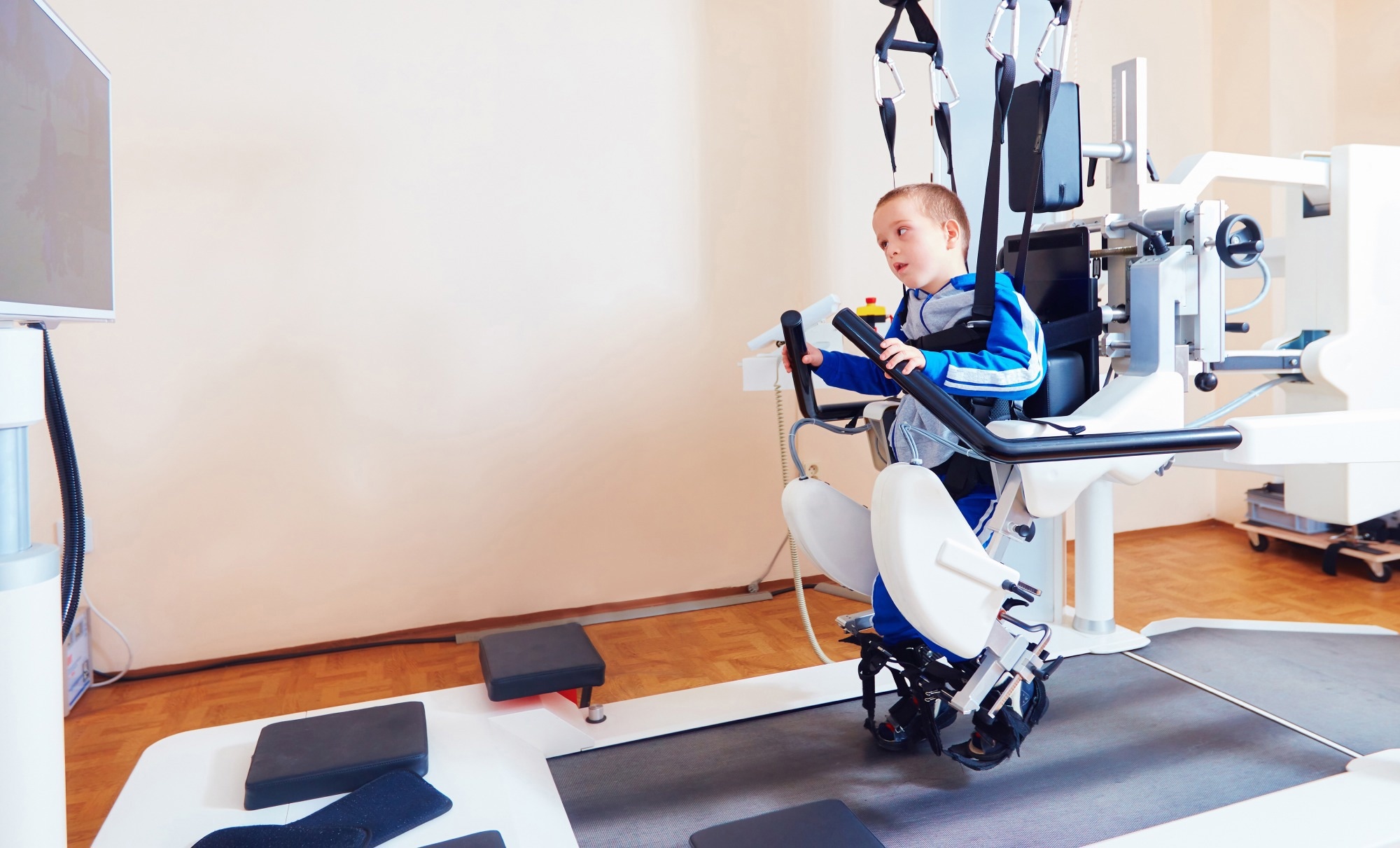In a paper published in the journal Scientific Reports, researchers aimed to create an artificial intelligence (AI)-based system predicting gait quality progression using kinematic data from 734 patients with gait disorders. They processed this data into gait profile scores (GPS) for each cycle and explored signal and image-based approaches, achieving an area under the curve (AUCs) above 0.72 with neural networks. This groundbreaking study represents the initial application of neural networks for gait prediction, highlighting the promising prospects for future advancements in this domain.
 Study: Predicting Gait Quality Progression Using Neural Networks. Image credit: Olesia Bilkei/Shutterstock
Study: Predicting Gait Quality Progression Using Neural Networks. Image credit: Olesia Bilkei/Shutterstock
Related Work
Gait disorders, deviations from normal walking, are prevalent in older adults, affecting around 35% of those over 70 and up to 72% over 80. These issues stem from various sources, including neurological, orthopedic, and medical conditions, impacting patients' quality of life significantly. Traditional observational gait analysis (OGA) has limitations due to subjectivity, prompting the shift towards quantitative gait analysis (QGA) for objective assessment.
Gait Analysis: Prediction Using AI
This study, conducted between 2021 and 2022 in adherence to the Declaration of Helsinki, obtained data from 734 patients (115 adults and 619 children) who underwent clinical 3D gait analysis at the Brest Hospital in France. From June 2006 to June 2021, the collection used consistent instrumentation—Vicon motion analysis system and force platforms—to record 16 markers' trajectories and ground reaction forces. Gait kinematics, encompassing nine joint angles, were derived using the Vicon Plug-in Gait model and computed as GPS to gauge deviations from normative data.
A dataset comprising 1459 gait sessions from 734 patients provided a rich resource, with an average of 1.988 sessions per patient. The prevalence of neurological conditions, notably cerebral palsy, was evident in the data. The average patient age in the initial gait session was 14 years, and the period between the first and last sessions for patients with multiple sessions averaged approximately 3.92 years. For consecutive gait sessions, the average interval was around 740 days.
The study's focus on predicting GPS variations akin to time series classification tasks involved classifying whether a patient's gait improved or worsened, treated as binary outcomes. The dataset's distribution allocated 73% for training, 12% for validation, and 14% for testing. Researchers employed two distinct approaches. One focused on signals, utilizing neural network architectures like multilayer perceptron (MLP), long short-term memory (LSTM), fully convolutional neural network (FCN), residual network (ResNet), Encoder, time le-net (t-LeNet), and transformer. The alternative approach focused on visual representations, utilizing the two-dimensional fast Fourier transform (2D FFT) to translate time series into visual data. Pre-trained CNN models processed this transformed information, including visual geometry group 16 (VGG16), ResNet34, EfficientNet_b0, and the Vision Transformer (ViT).
Exploring strategies such as jittering, scaling, and window warping, researchers aimed to mitigate overfitting through data augmentation techniques. They also used 2D FFT for the image-based approach to convert sensor modalities into visual representations, enhancing pattern recognition. The study delved into pre-trained models and a tailored 2D CNN, optimizing hyperparameters like the number of convolutional layers, dropout rates, and learning rates, employing KerasTuner for fine-tuning and maximizing validation AUC.
Gait Variation Prediction: Model Comparison
The study focused on predicting GPS variations between consecutive gait sessions, a binary classification task. LSTM and MLP showed comparable performance on the validation set in the signal-based approach. At the same time, ResNet and FCN yielded the highest validation AUC (0.709 and 0.705, respectively) among the state-of-the-art architectures. Incorporating data augmentation improved convergence for most models, with FCN achieving the best validation AUC of 0.723.
For the image-based approach, pre-trained models exhibited overfitting tendencies, but their results on the test set closely mirrored those of the validation set. Timm models displayed similar performance, with validation AUCs surpassing 0.63. However, a CNN trained from scratch outperformed them with a validation AUC of 0.726, showcasing its superiority in this context.
The discussion highlighted the trade-off between model complexity and available data, indicating that from-scratch architectures slightly outperformed more complex state-of-the-art models due to the limited dataset size. Data augmentation techniques in the signal-based approach showed promise but require further optimization. Additionally, the disparity between source and target domains likely contributed to the superior performance of the CNN trained from scratch in the image-based approach.
Comparison via ROC curves indicated significant differences between the best-performing models: the FCN model (with data augmentation) and the CNN model. The FCN model, demonstrating better efficiency, achieved a validation AUC of 0.723 and a test AUC of 0.717, implying that it processed raw signals more effectively than synthetic images.
Conclusion
To sum up, the study delved into predicting GPS variations in gait sessions using diverse approaches. The signal-based method showcased comparable performance among LSTM, MLP, ResNet, and FCN, with FCN excelling after data augmentation, attaining a validation AUC of 0.723. Conversely, a CNN trained from scratch outperformed pre-trained models in the image-based approach, securing a validation AUC of 0.726, underscoring its efficacy despite domain disparities.
The discussion highlighted trade-offs between model complexity and dataset limitations. While data augmentation in signal-based approaches showed potential, the superiority of from-scratch CNNs in image-based tasks revealed their capacity to process raw signals effectively. Ultimately, these findings underscore the intricate relationship between model architecture, data augmentation, and domain relevance in predicting gait variations.